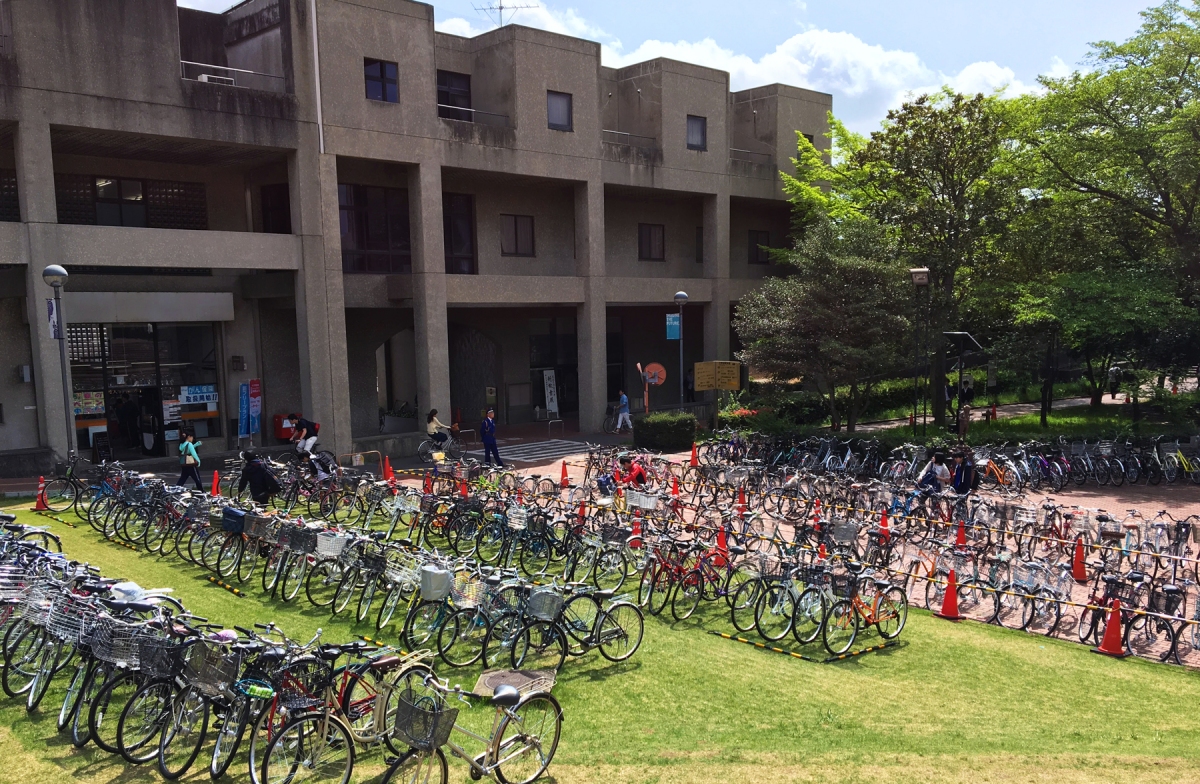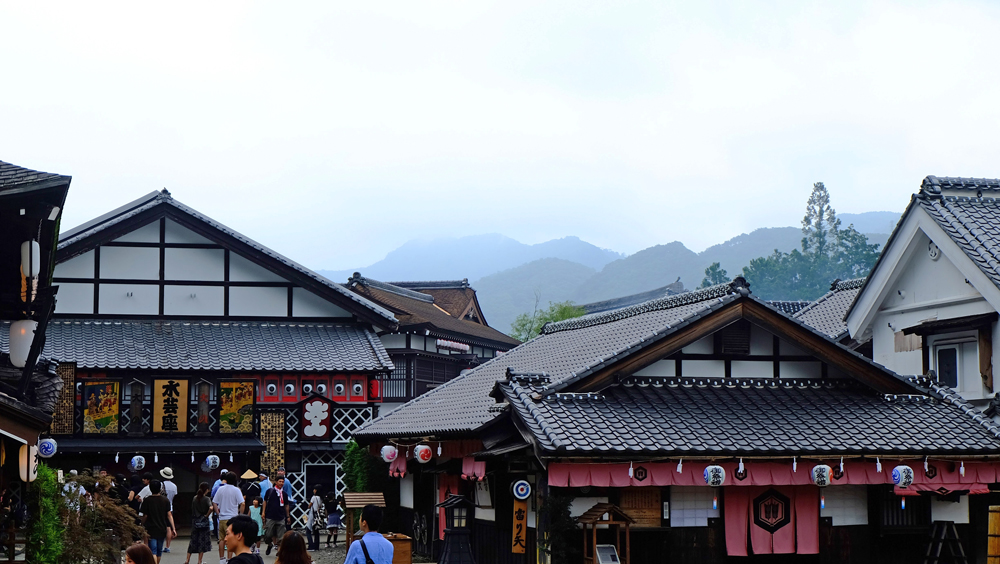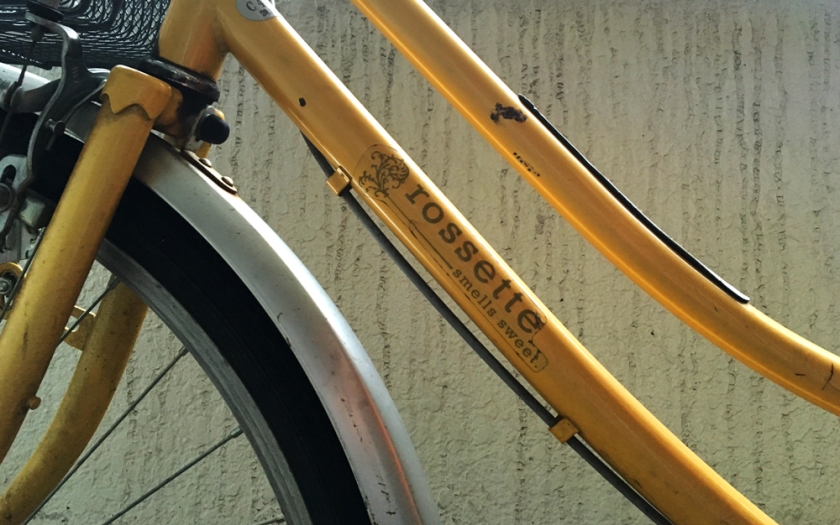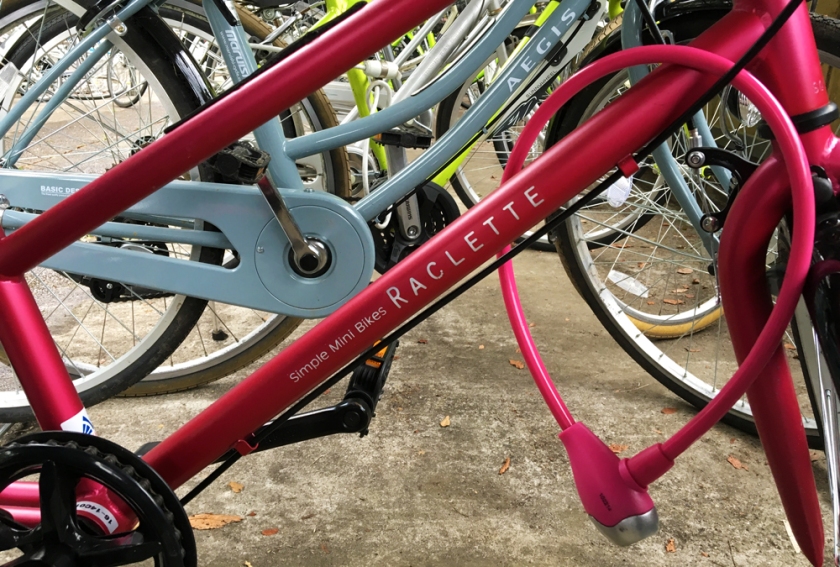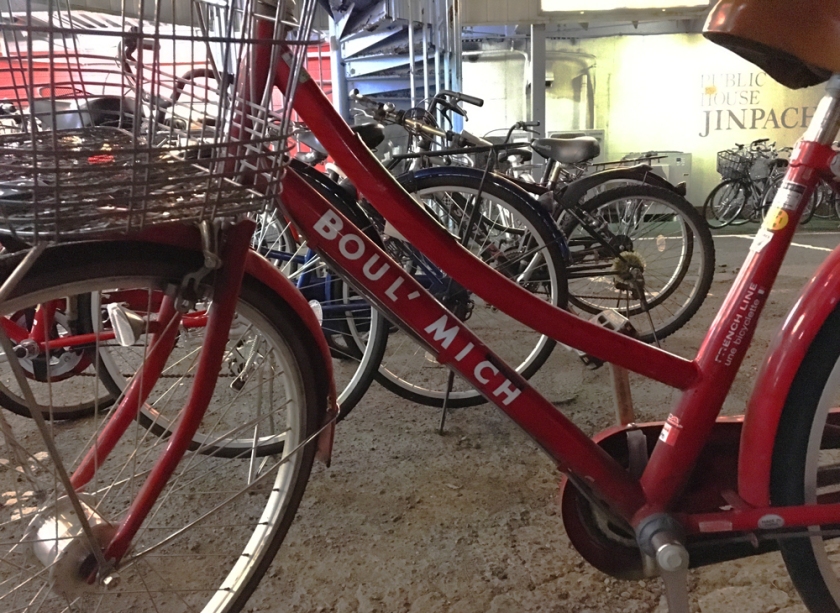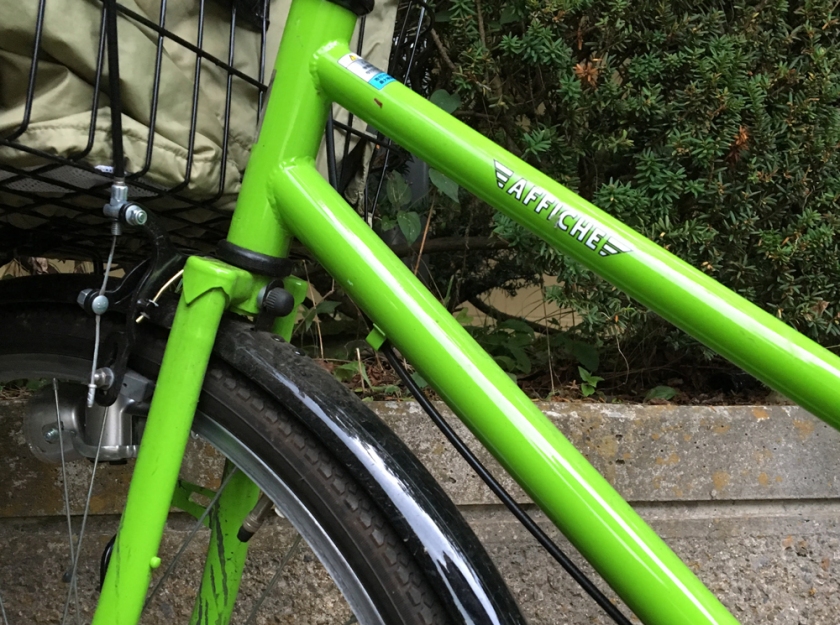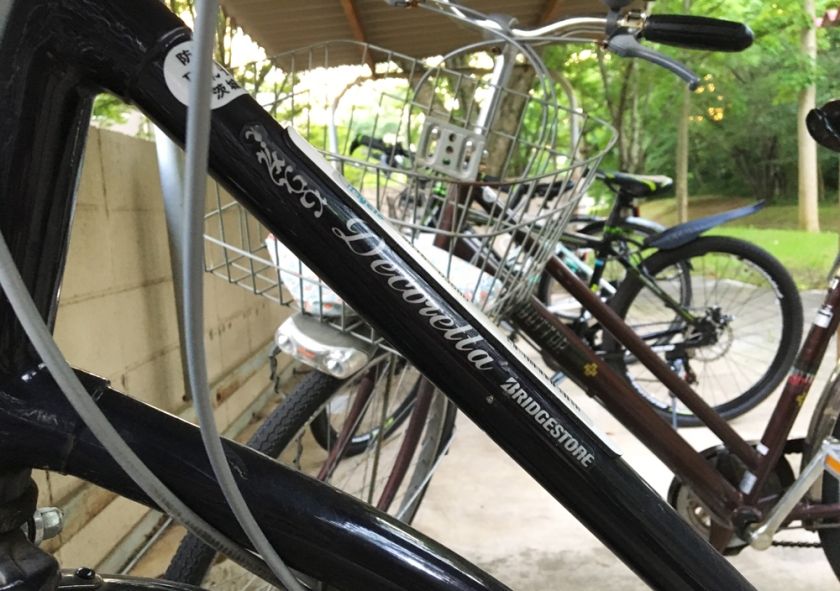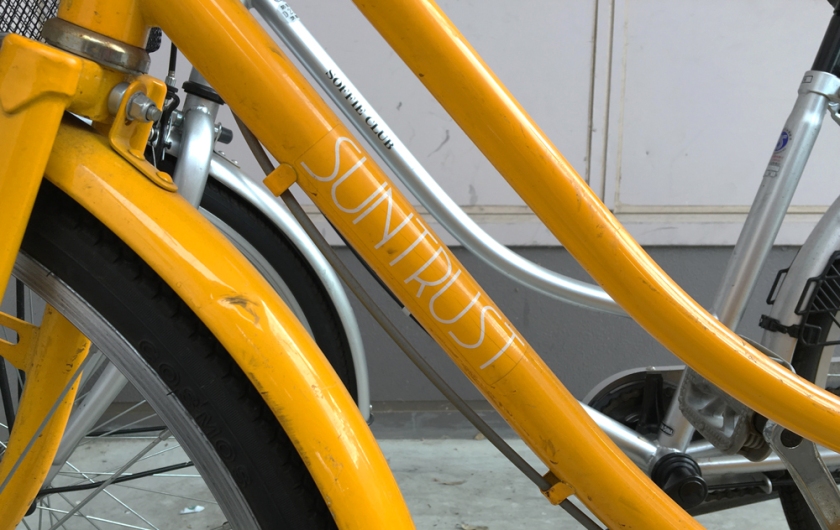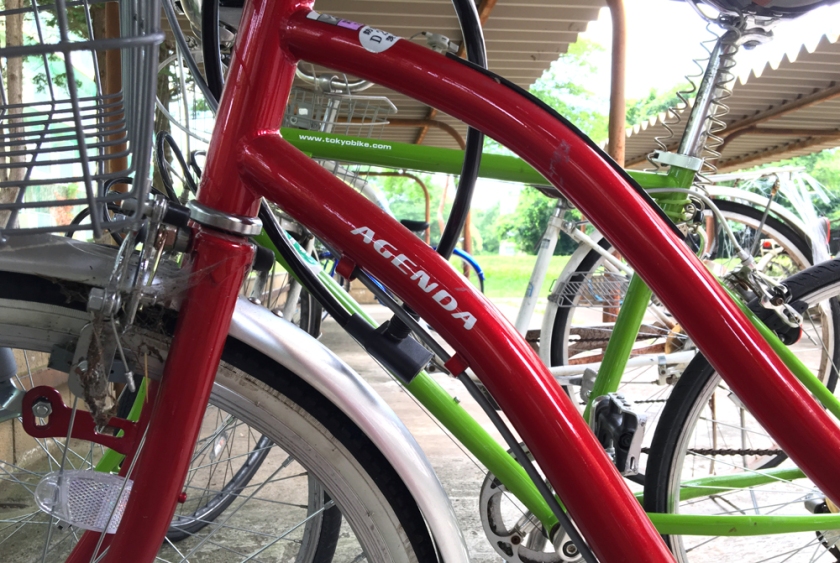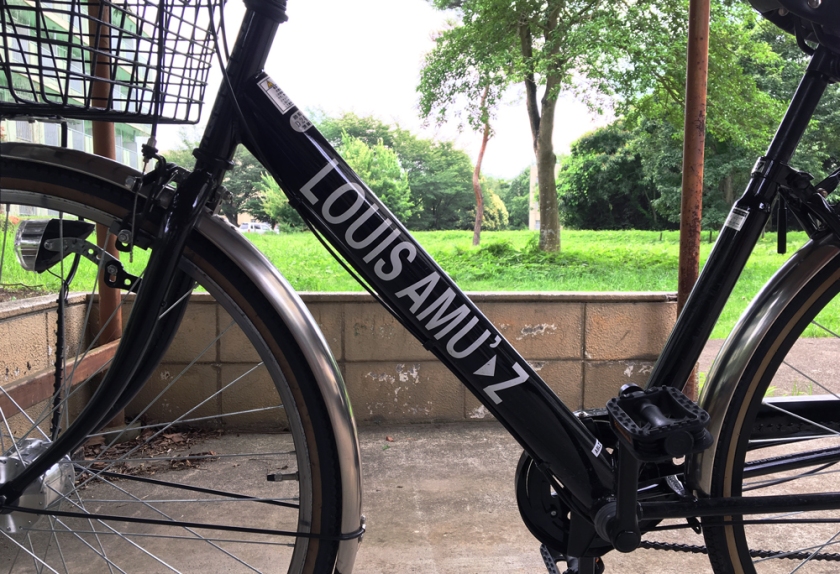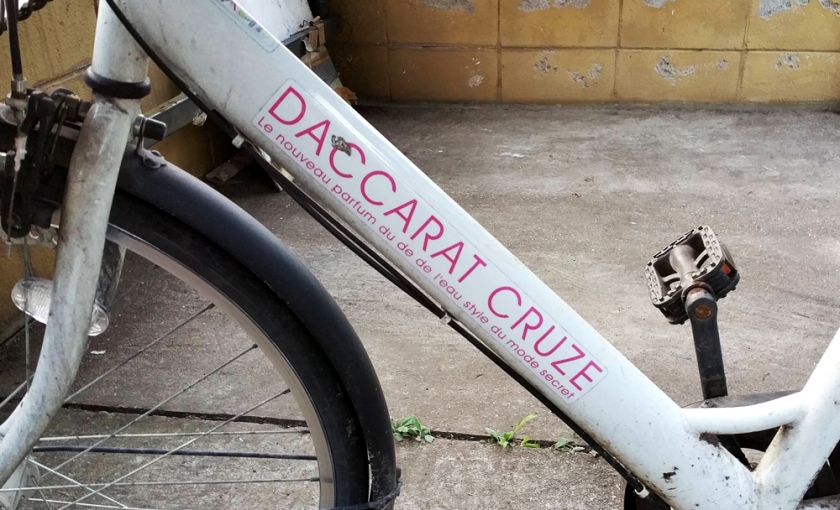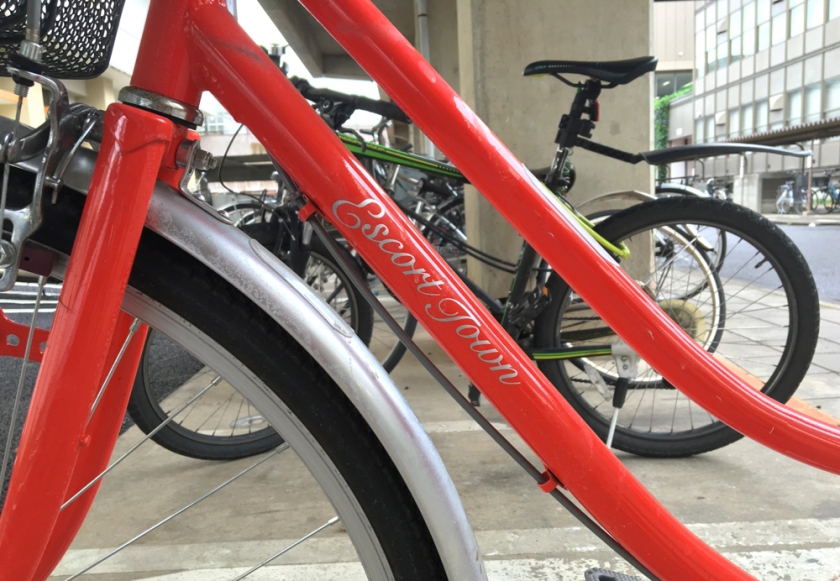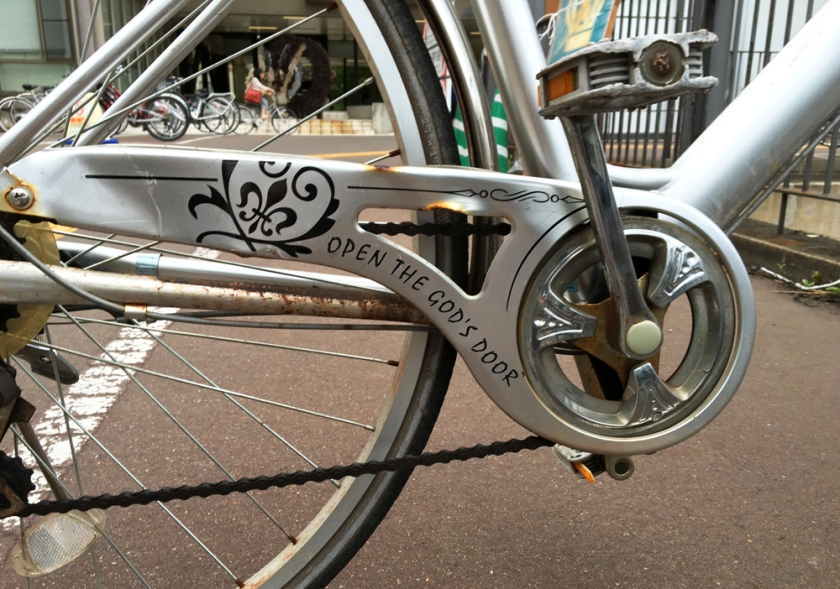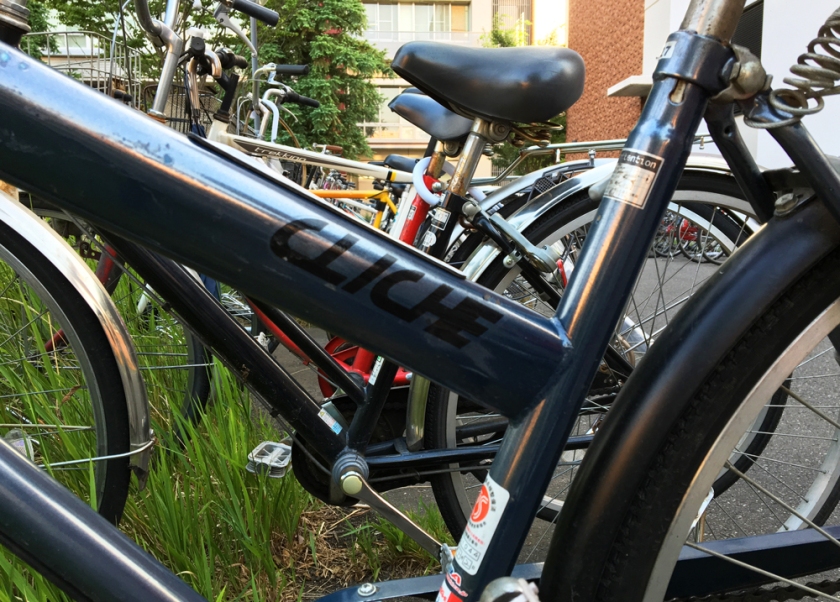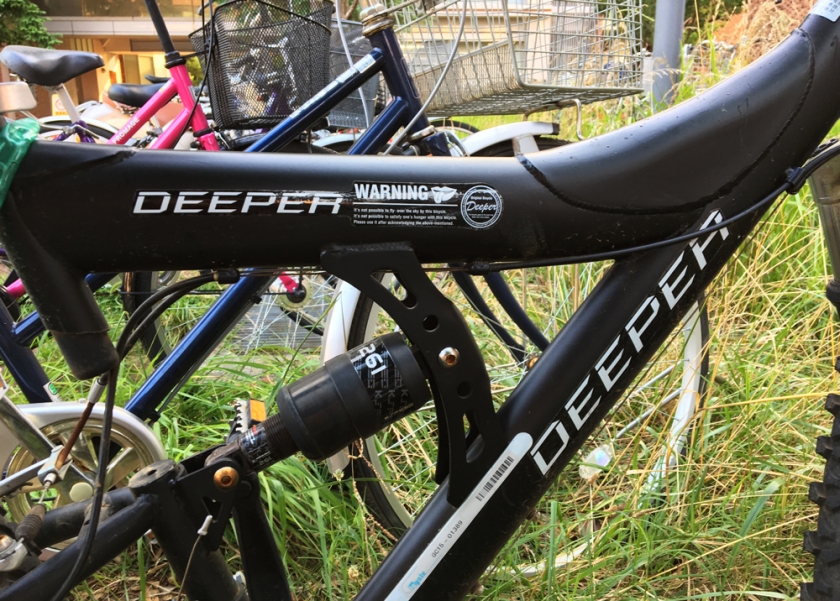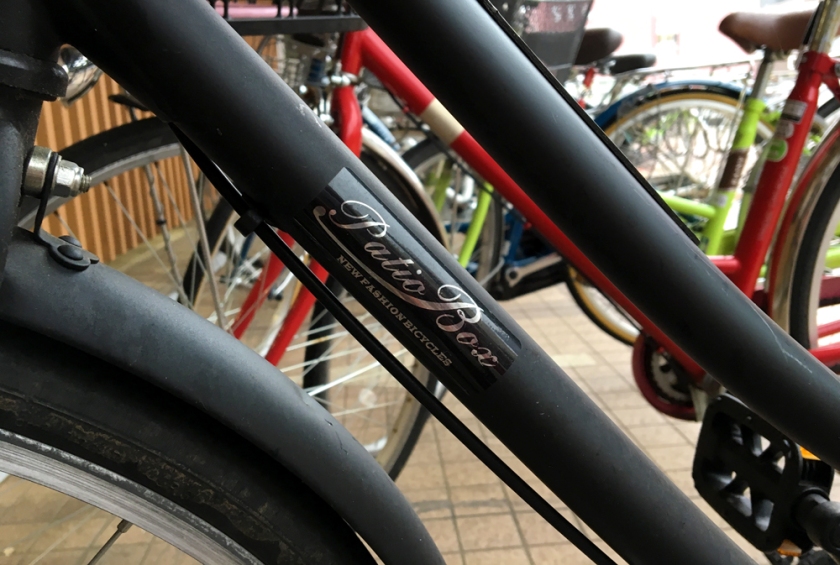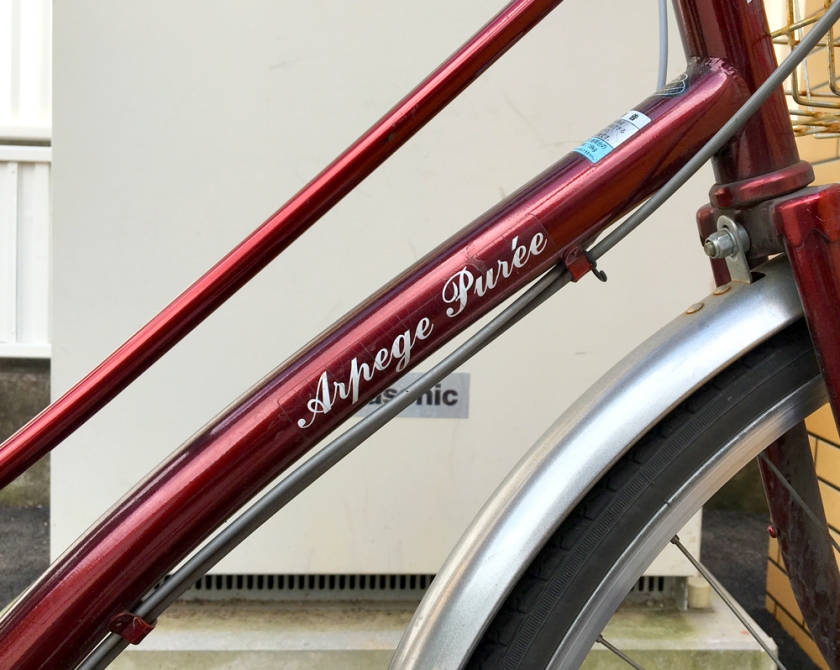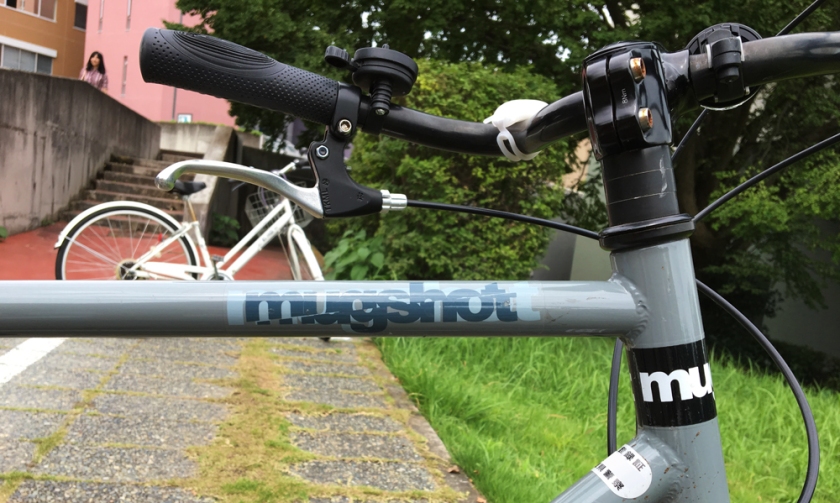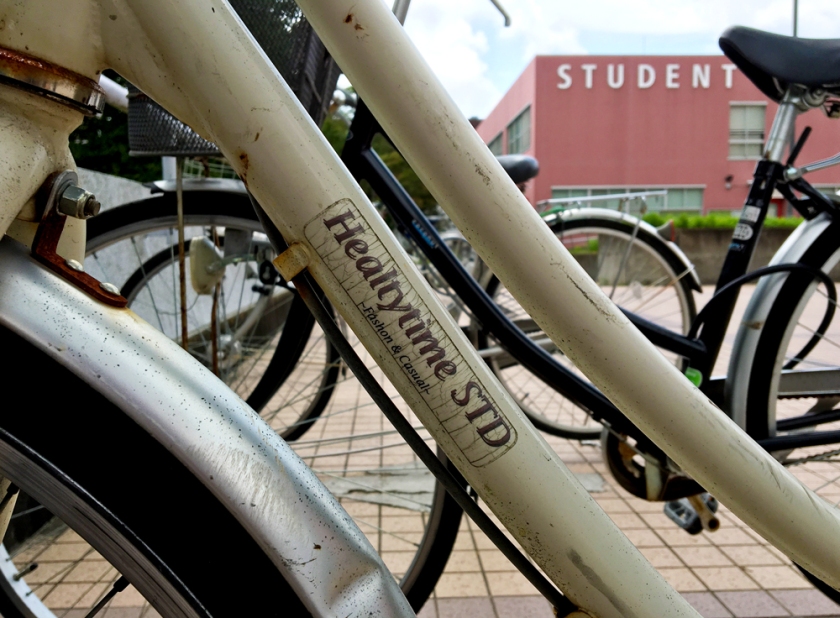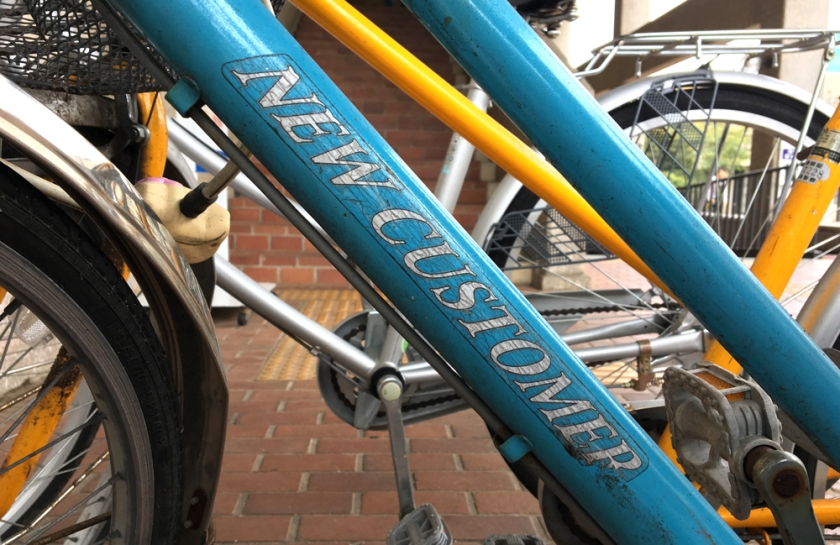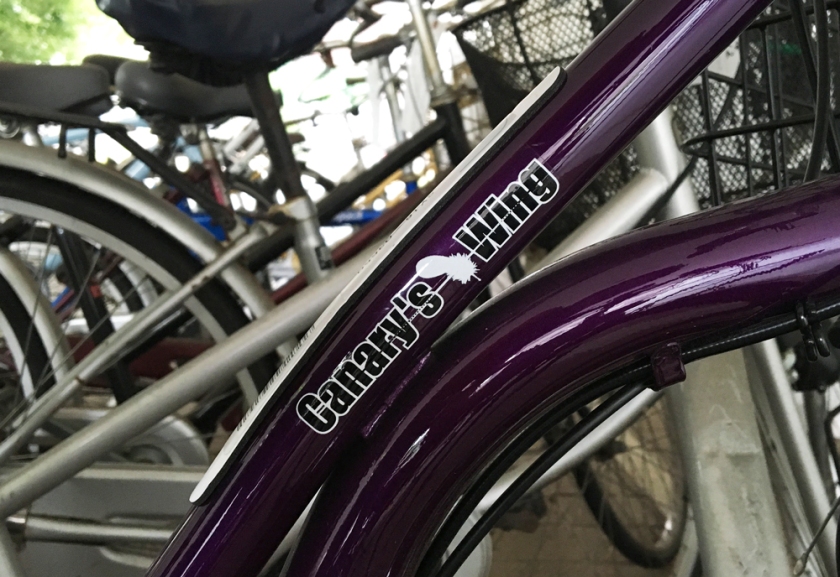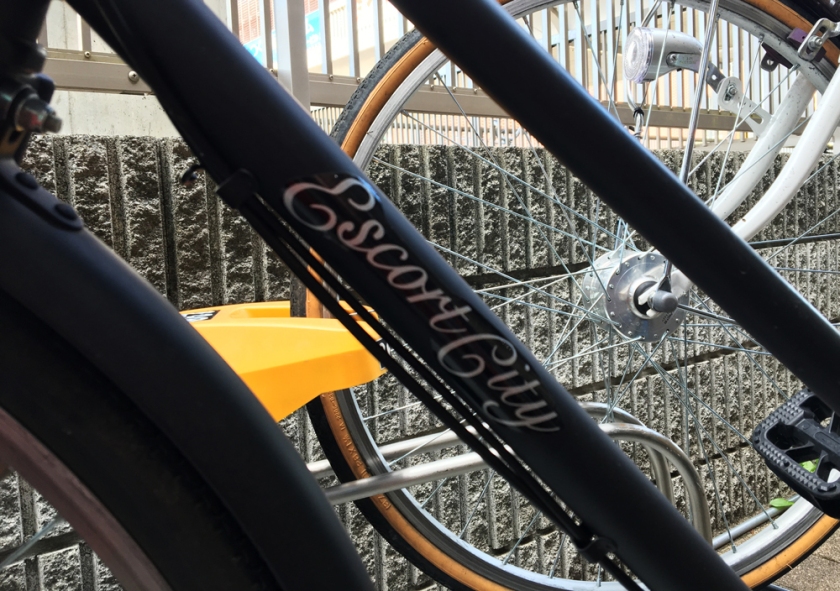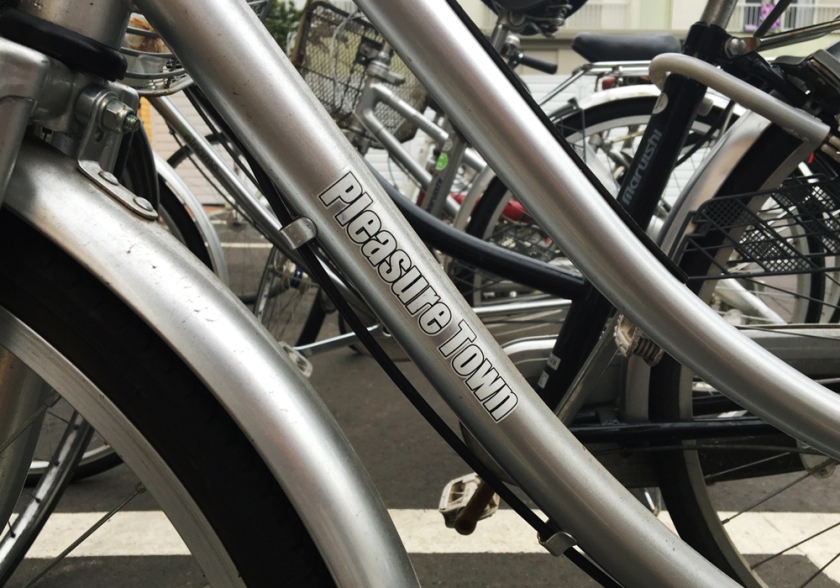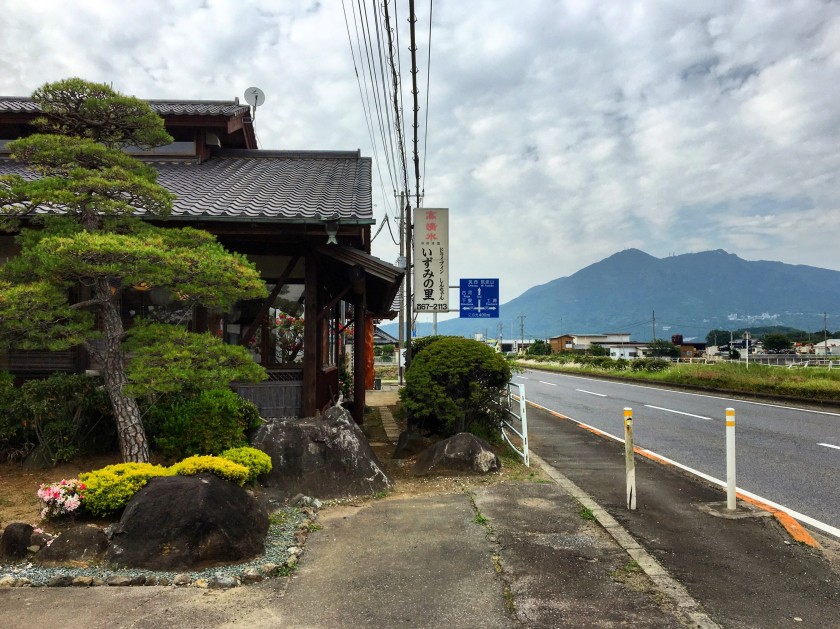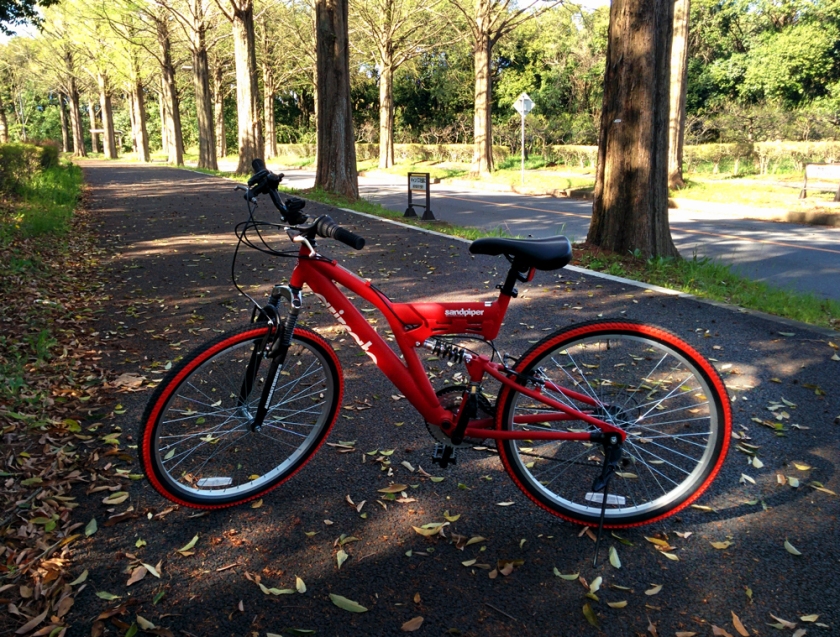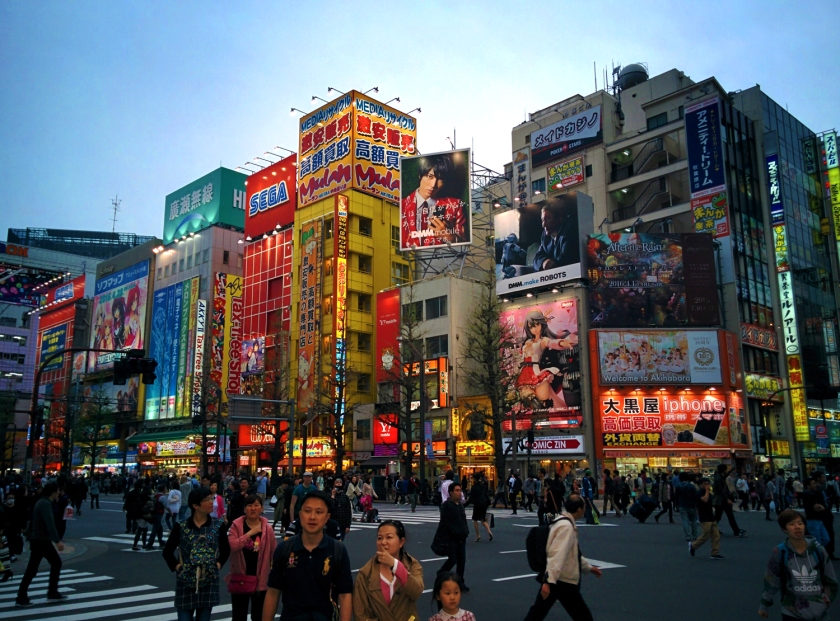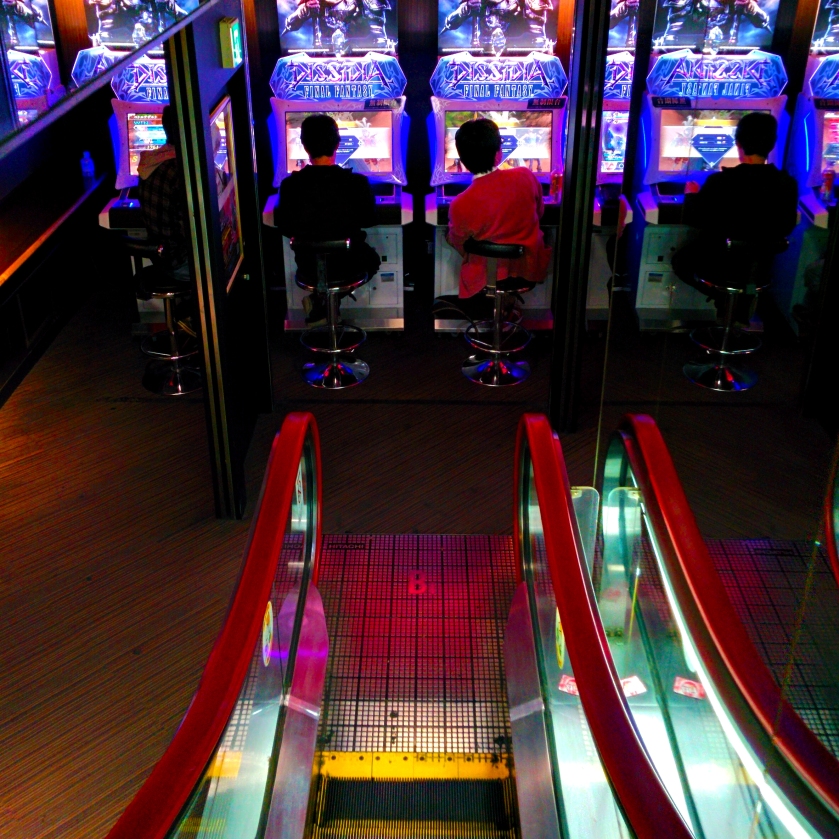Cycling is an essential part of Japanese life and more so in Tsukuba than anywhere else. This post treats an essential part of this daily means of commuting in hopes of spreading better awareness around it, making it safer and serving as a fair warning for potential students and researchers coming to Tsukuba University or really anyone who has chosen Japan’s Science City as their new home.
First off, let me start by advising you on something I found to be relatively common: If you don’t know how to ride a bike, learn how to before coming. Don’t be so naive as to think you can go about, trouble-free and live your life without a bicycle. Not that it can’t be managed, many do it except it is impractical, wastes time and will make you feel a bit left out since groups usually rely on bikes for everyone to go out to the same places and accompany each other on the way back home especially when/where the buses don’t run. It is fun, essential and can help you discover your city so much better and this is made very easy by the adaptability of the campus and city roads to accommodate cyclists.
Onto the topic at hand: Bicycle safety is an issue that comes up at every entrance period and is prudently explained to students in hopes of avoiding accidents and dangerous behaviour. Of course, nothing can completely prevent that; things happen with all the people flocking to classes at the same time in the morning, coupled with the fact that they’re stressed, late, not completely awake or unfortunately too distracted by their cellphones swerving around like drunks. People go fast, turn abruptly, text and do all kinds of stupid things. This is not to discourage you from owning a bike because that will likely be the case anywhere in the world where bicycles are a dominant means of transportation.
From the obvious to the not so obvious, to the very Tsukuba-specific, here is a list of smart things you should do, and dumb things you shouldn’t in the hopes of improving bicycle safety on and off-campus:
- The obvious: Don’t text, play games on your phone or ride one-handed while holding something that doesn’t allow you to take proper control of your handlebars. Countless accidents have happened because of that notably during the Pokémon-Go craze and still does today. A head-on collision on a bicycle is far worse than you can imagine. Lots of exposed metal and so much potential to cause multiple accidents.
- Stick to the left on campus roads as indicated by signs. Not everyone follows this but it helps to, especially considering that there are pedestrians as well, who are supposed to walk on the right side.
- Don’t ride parallel to others. Most campus roads are narrow enough to hinder circulation if cyclists ride side by side. Not to mention that there won’t be any room to dodge obstacles or oncoming people.
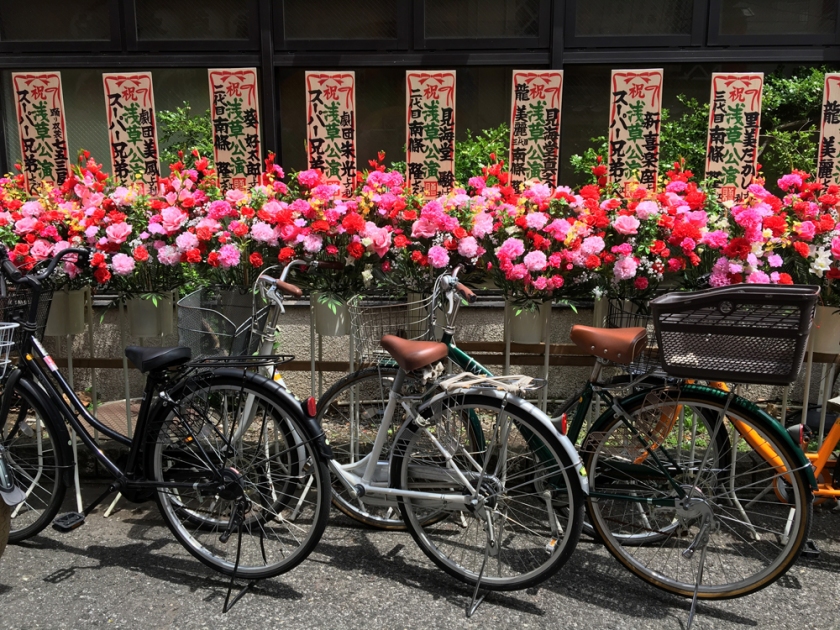
- Avoid riding on busy narrow streets in areas such as Amakubo Ni-Chome 天久保2丁目, Kasuga Yon-Chome… and take either the inside roads or the campus road if you can, even if it means taking a slight detour. Not only is it safer for you, it is much less of a hassle for buses and cars alike as they cannot overtake you on these particular streets seeing that they witness busy traffic all throughout the day.
- Avoid riding with an umbrella even though everyone does it. Not only is it technically illegal (although I don’t know of anyone who’s been stopped for that, but bear in mind that the police do have the jurisdiction), it is very dangerous as you are left with only one hand to control and steer your bike be it in heavy rain, fighting the wind and trying not to slip on wet surfaces. For practicality’s sake, either get a rain suit, a poncho or simply a convenient umbrella holder that attaches to your handlebars.
- Beware of your surroundings at all times. Not everyone is attentive and will sometimes ride absent-minded. This is a minor problem but much more common than you might think. Also in some areas, you could be caught by surprise by a pedestrian coming from behind a blindspot.
- Lock your bike. Theft is very uncommon in Japan but for some reason bike theft (notably around campuses) isn’t so uncommon. I’ve only ever heard of a small number of cases and that was partially due to the bike being either too flashy and expensive or being very poorly locked. So if you prize your bike as much as I do, lock it. I’ve seen some Japanese students with high-end road bike even take them up to their apartments. It is generally ridiculously safe but you don’t want any regrets when things like this do happen.
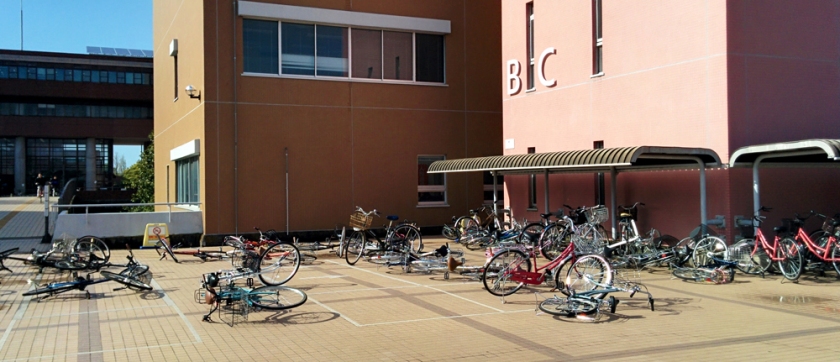
- Do not ride without lights. Also illegal. Highly. It is crucial that cyclists render themselves as visible as possible. There are many ways to do that and the accessories required are plentiful and cheap. Visit your local hyakuen shop 100円ショップ for inspiration. I’d recommend either Daiso or Seria being two of the bigger ones around here. They have a great collection of lights and reflectors.
- A helmet is always a good idea. People rarely wear them though but you wouldn’t see a proper cyclist on his road bike without one. So if you’re planning on doing day trips to nearby towns and all, then by all means invest in one, otherwise it isn’t so common around campus.
- Sidewalks are bumpy but are generally safer than roads although legally bikes are required to ride on the road unless a bicycle lane is clearly marked. In areas near Tsukuba Medical Center Byouin 筑波メディカルセンター病院, the bicycle lane is marked as part of the road. On the big highways Nishi 西 and Higashi Odori 東大道, the bicycle lanes are on the sidewalks. This law isn’t enforced to be honest so wherever you ride, ride safely and watch out for cars and buses.
- Keep the buses in mind when riding on the road. Because of their regular stops, buses sometimes get caught behind cyclists as they approach the bus stop. The drivers will either drive very slowly (if they’re close enough to the stop) or communicate a message to you via the external speakers telling to be wary of their approach to the bus stop, to speed up or to make way by slowing down.
- Bicycles normally don’t have turn signals although they are available to buy at some cycling shops and hyakuen shops 100円ショップ and make unique and safe additions to the bike. As an alternative, be sure to give warning to the oncoming cars (if it’s safe to cross) and the traffic behind you that you will be making a turn.
- This is one of the more basic codes of conduct: Don’t park your bike like a jerk. Don’t park where it’s not legal/indicated, don’t park where it might hinder the movement of pedestrians or passage of other bikes and most importantly do not park too close to or on braille blocks.
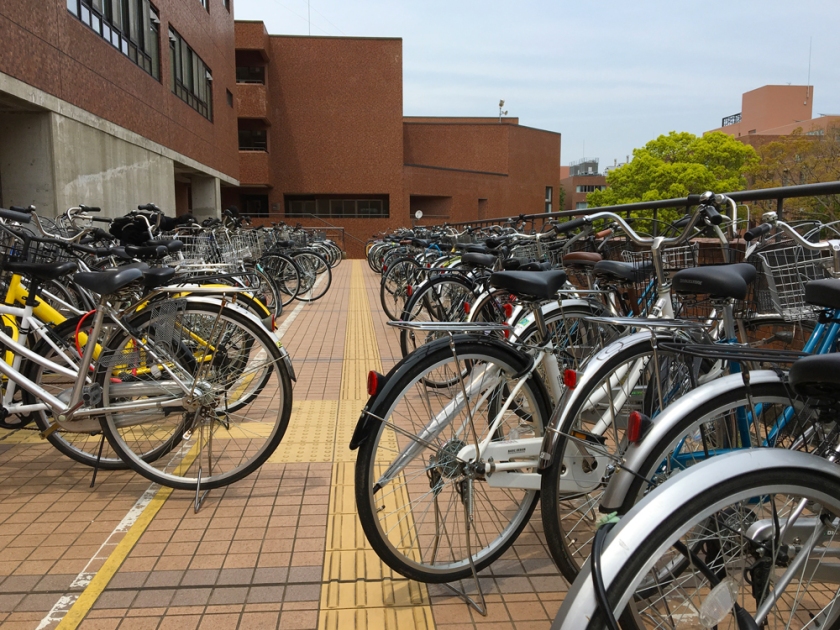
How to park like a douchebag. - Ride with gloves in the winter. Cold hands make for a lesser sensitivity to the handlebars and a decreased ability to control your bike in case of emergency. On the more logical side, why would you prefer pain and dry knuckles when you can have them warm and toasty?
- Do regular maintenance of your bike: You don’t want a brake failure when you need it the most. Change them regularly they’re quite cheap. Chain cleaning and lubrication can prevent chain slipping and potential injury. These kinds of accidents are more prevalent when going uphill which puts tension on the chain and gears. So if they aren’t well lubricated, they will slip and this can cause you to lose balance and fall more often than not. Keep your tires pumped as it can be quite frustrating to be have a flat tire especially when you need the bike the most. Watch for degradation of the tire rubber and tread.
- Bicycle parking around the center could be hard to find as all spots tends to be taken. There is however somewhere you could go for cheaper and relatively more available parking. There’s a bike parking under Bivi right next to the bus station with bike racks on two levels. The upper level is quite cheap especially if you’re using it to park your bike for a day or two while you’re out of town. It costs 円50 per day as opposed to 円150 or more for other options, some as high as 円750.
- Always carry a tire patch-up kit. Sometimes you might be forced to use it when for instance riding out of town to nearby Tsuchiura or along the beautiful Ring Ring Road. Puncture repairs can be expensive and for that I recommend the 円100 patch-up kits and some elbow grease.
- In case you don’t feel like repairing your own tire, pop down to Nakajima Motorcycles for a quicker and cheaper repair. On average cycle shops charge 円1000 for a tire puncture. Although nominal, their 円900 fee comes with better and faster service than any of the nearby cycle shops. Here is their location: https://goo.gl/maps/6vgQRVW2Yjy
- Ring Ring Road つくばりんりんロード is where the old Tsukuba train line (Tsukuba Testudou) used to run. Today it is a 40.1 kilometer route that links Tsuchiura City to Iwase Town. It is great for day trips; it passes through beautiful little towns, between rice fields and some of the famous sights of the area like the Amabiki Kannon Temple.
- Register your bike with the police and the university. The police registration can be done at any cycle shop while the university registration has to be done through your academic service office. Of course you don’t need to do the latter if you aren’t coming to Tsukuba Daigaku but if you are it’s mandatory or it can result in your bike being impounded.
- Carry your bicycle’s registration papers. It is not uncommon for police to stop you and ask to see them especially during entrance periods. They will come in handy when selling your bike on the second hand group (Stuff for Tsukuba Residents).

